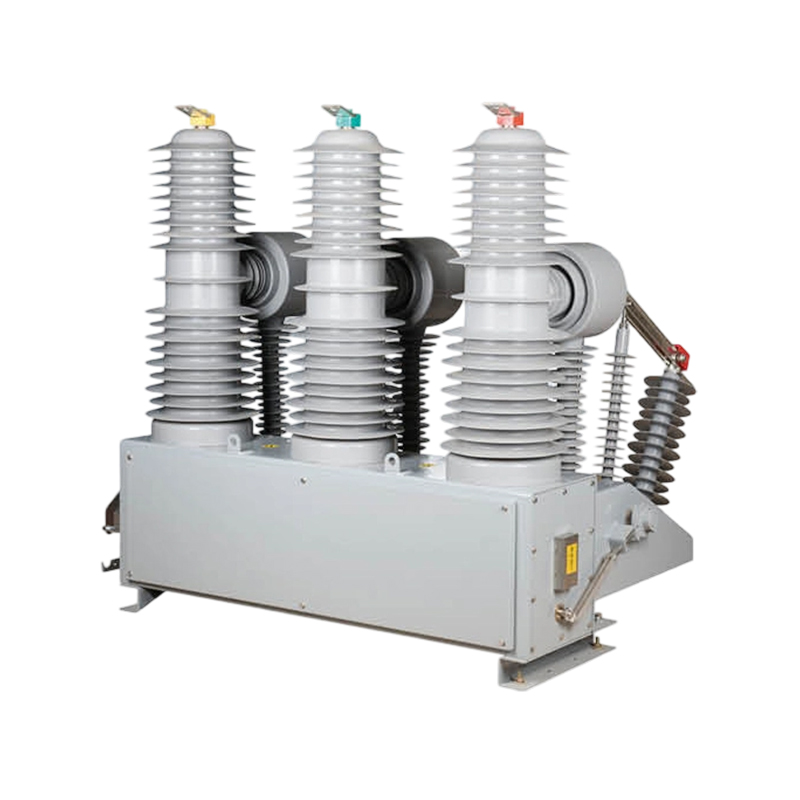Industry News
Maintenance Benefits of Electrical Vacuum Power Circuit Breakers
Electrical vacuum power circuit breakers are key devices used in medium to high voltage electrical systems to interrupt fault currents and protect electrical equipment. They offer a reliable and efficient method for switching and isolating circuits under normal and abnormal conditions, playing a significant role in power distribution networks.
The core principle of a vacuum power circuit breaker lies in its use of a vacuum as the medium for arc extinction. When the breaker interrupts the electrical current, contacts inside the vacuum chamber separate. The vacuum environment, characterized by very low pressure, prevents the ionization of gas and rapidly extinguishes the electric arc formed between the contacts.
This quick interruption reduces the likelihood of damage to the breaker components and connected equipment. The vacuum also eliminates the need for additional arc quenching mediums such as oil or gas, simplifying the breaker design and maintenance.
A typical electrical vacuum power circuit breaker consists of several main parts:
Vacuum Interrupter: The critical component where the electrical contacts open and close inside a sealed vacuum environment.
Operating Mechanism: A mechanical system that controls the movement of the contacts, ensuring timely opening and closing actions.
Insulation Housing: Surrounds the vacuum interrupter and provides electrical insulation and mechanical support.
Contact System: Made from materials resistant to wear and capable of withstanding electrical and mechanical stress.
The vacuum interrupter is usually constructed with robust ceramic or glass envelopes to maintain the vacuum seal over the device’s operational life.
Vacuum power circuit breakers offer several benefits in electrical distribution systems:
Compact Design: Due to the absence of oil or gas, vacuum breakers tend to be smaller and lighter compared to other types of circuit breakers.
Low Maintenance: The sealed vacuum interrupter reduces contamination and wear, lowering maintenance needs.
High Reliability: Rapid arc extinction pilots to effective interruption of fault currents, protecting downstream equipment.
Environmental Safety: Since no insulating gases or oils are used, vacuum breakers avoid environmental risks related to leakage or disposal.
Fast Operating Speed: The operating mechanism can open and close contacts quickly, enhancing system protection.
Vacuum power circuit breakers are commonly applied in various settings, including:
Medium Voltage Distribution Systems: Often rated for voltages between 1 kV and 36 kV, making them suitable for industrial plants, commercial buildings, and utility substations.
Motor Control Centers: Protect motors by interrupting current during faults.
Switchgear Assemblies: Incorporated in switchgear panels for controlling and protecting electrical circuits.
Renewable Energy Systems: Used in solar and wind power installations to provide reliable circuit interruption.
Proper installation of vacuum power circuit breakers involves ensuring correct alignment with the electrical system and adherence to electrical codes and safety standards. The breaker must be mounted securely with appropriate clearances for operation and maintenance.
Operators should be trained on the breaker’s function and emergency procedures, as rapid switching can cause mechanical and electrical stresses. Routine inspections and testing help confirm that the breaker remains operational and reliable over time.
Electrical vacuum power circuit breakers provide a dependable solution for protecting medium to high voltage electrical systems. Their efficient arc extinction in a vacuum environment, combined with compact design and low maintenance requirements, make them suitable for a wide range of power distribution applications. Selecting the appropriate breaker and ensuring proper installation supports system safety and longevity.

Next
Design and Construction of Waterproof PVC Electrical Junction Boxes
<p>A <a href="/product/cable-branch-box-switch-station/" target="_blank"...
View More- PRODUCTS
- New Energy Power Distribution Equipment
- Box Type Substation
- Cable Branch Box/Switch Station
- High Voltage Switchgear
- Low Voltage Switchgear
- Engineering Vacuum Circuit Breaker
- New Energy Vehicle Floor Charging Pile
- Commercial Energy Storage
- Photovoltaic Complete Box
- High Voltage Arrester
- INFORMATION
-
-
Phone+86-13868788848
+86-13356188725 -
Tel+86-0577-88810567
-
E-mail
-
AddNo. 59, Youyi Road, Xinguang Industrial Zone, Liushi Town, Yueqing City, Zhejiang, China
-
- ENQUIRE WITH US
Photovoltaic Module Manufacturer




 English
English  中文简体
中文简体  русский
русский  Español
Español  عربى
عربى 


